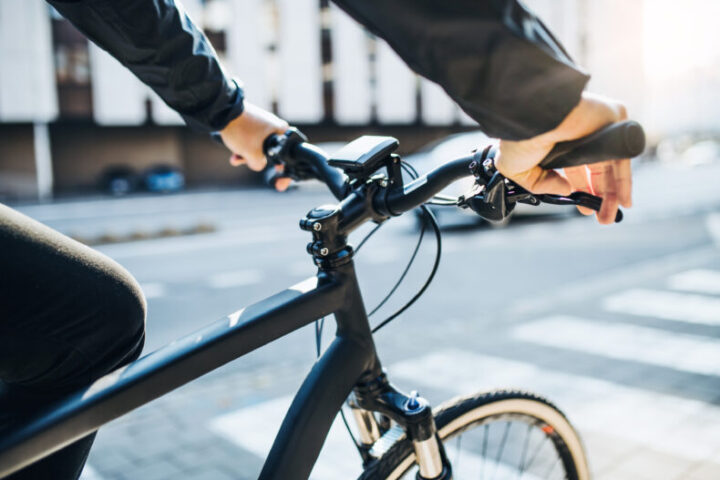California has one of the country’s highest numbers of rideshare drivers. The increasing use of private drivers over traditional taxi services puts a rising number of vehicles on the road. Therefore, the likelihood of an Uber or Lyft accident occurring is high.
When an accident takes place, seeking out the right party to seek damages from can be difficult. Here is how a ridesharing accident lawyer will determine liability and use that information to get clients the compensation they deserve.
Laws Surrounding Fault in an Uber or Lyft Accident
California is an “at-fault” jurisdiction, meaning you must prove that the other driver in an accident is at fault to receive compensation. You accomplish this by either confirming the other driver’s negligence under common law or proving the driver violated the California Vehicle Code or any other law.
Common-law negligence requires your attorney to show in legal pleadings that the other driver had a duty to operate their vehicle safely without endangering anyone else. You must then prove how the driver breached their duty of care.
The next element to prove is that the other driver’s actions are the direct cause of the accident. Then, you must show that the accident is why you suffered damages, including monetary loss, mental pain and suffering, or physical injury.
Your car accident lawyer will review the accident reports and compare those with the California Vehicle Code, negligence law, insurance law, and case law to make the best legal arguments possible.
Comparative Negligence
California allows drivers to be found negligent in varying degrees. Negligence depends on the portion of responsibility each person holds for causing the accident.
Comparative negligence means if you win a lawsuit but are found partially liable, the percentage of your liability will reduce your reward. Even if you believe you are partially at fault in your injury accident, speak with an auto accident attorney to learn your options in filing a lawsuit. Oftentimes, compensation is still higher than expected considering the circumstances.
Insurance Policies for Ridesharing Drivers
Insurance laws for traditional taxi services do not apply to Uber and Lyft services. Instead, rideshare services do not fall within the laws of transportation services. This is because the service is provided by independent drivers and not actually employees.
If this isn’t confusing enough, the companies provide insurance that provides coverage under specific circumstances, but not all. However, you may be able to receive compensation from the driver’s personal auto insurance instead of from Uber and Lyft.
California requires drivers to meet Uber and Lyft insurance coverage minimums. A driver’s coverage depends on which of the following “period” classifications they are when the accident happens.
Rideshare App Not Active
When a rideshare driver does not have their app turned on and active, the driver is using their vehicle for professional purposes.
This is period 0. The driver’s personal insurance provides coverage. The minimum insurance the driver must have is:
- Bodily injury—$15,000 per person suffering injuries in the accident
- Bodily injury—$30,000 total coverage per accident
- Property damage—$5,000 per accident
Liability is the same as any other automotive accident, with a determination made by the accident investigation results.
Waiting for a Ride Request
The driver is working when their app is active, waiting to receive a ride request. There may be limited third-party liability coverage if they are in an auto accident during that time.
This is Period 1, and the rideshare driver must have a minimum of:
- Bodily injury liability—$50,000 per person suffering injuries in the accident
- Bodily injury liability—$100,000 total coverage per accident
- Property damage—$25,000 per accident
It is the rideshare driver’s responsibility to ensure they have sufficient coverage to work legally in California. Insurance coverage may fall under the driver’s policy or transportation network company (TNC) coverage. TNCs must provide a minimum of $200,000 in excess liability insurance.
When the rideshare driver is at fault, the person suffering an injury may receive compensation for bodily injury and property damage. The driver must use their personal insurance for the accident as the at-fault party.
Picking Up a Passenger or a Passenger Is in the Vehicle
Uber or Lyft may provide coverage for an accident if the driver is en route to pick up a passenger or if a passenger is in the vehicle. These scenarios are Periods 2 and 3 for insurance.
The rideshare company must provide a minimum of $1 million in liability insurance to provide coverage for the driver and passenger. A TNC may provide additional coverage.
Uber drivers in these coverage periods have $1 million in uninsured and underinsured coverage for bodily injury. There is also coverage for collision and comprehensive as long as the driver has coverage on their policy.
Lyft also covers their drivers in these periods with collision and comprehensive coverage. The driver must have coverage on their personal policy for the additional coverage to apply.
Another Driver Is at Fault
Suppose you are in an accident as a rideshare driver or passenger and the other vehicle is responsible for the collision. In that case, the process for filing claims will be the same as in any other automobile accident.
Your claim will be against the responsible driver’s insurance company. Rideshare insurance is not applicable.
Damages After a Rideshare Accident
When driver negligence results in others suffering personal injuries, the victim may collect compensation for all losses. This includes:
- Lost wages
- Loss of earning potential
- Medical bills
- First responder bills
- Mileage for accident-related medical appointments
- Permanent life-altering injury
- Pain and suffering
Immediately following an accident, the at-fault driver’s insurance company may contact a person suffering injuries and offer a quick settlement. Do not accept any offer without consulting a car accident lawyer.
Insurance companies make money collecting premiums, not paying for losses. They may offer a lowball settlement, hoping you will accept. Your acceptance prevents you from later claiming the higher compensation you deserve.
Steps at a Lyft or Uber Accident Scene
Protecting your rights following an accident is crucial whether you are hit by a rideshare driver or a passenger. Here is what to do after an accident:
- Document the accident scene by taking pictures of the overall scene, vehicles, and license plates
- Take a screenshot of your rideshare app to show you were using it at the time of impact
- Look for witnesses and gather their contact information
- Follow the rideshare app guidelines for reporting the accident
- Seek medical attention for any injuries you suffer
Schedule a consultation with a rideshare accident lawyer as quickly as possible following an accident where you suffer personal injuries.
Contact a Car Accident Lawyer
If you suffer personal injuries in an Uber or Lyft accident, schedule a consultation with Angeleno Accident Lawyers. We will review the details of your case and help you receive the compensation you deserve.
Call (213) 510-9246 or use our online contact form to schedule a 100% free case evaluation today.



